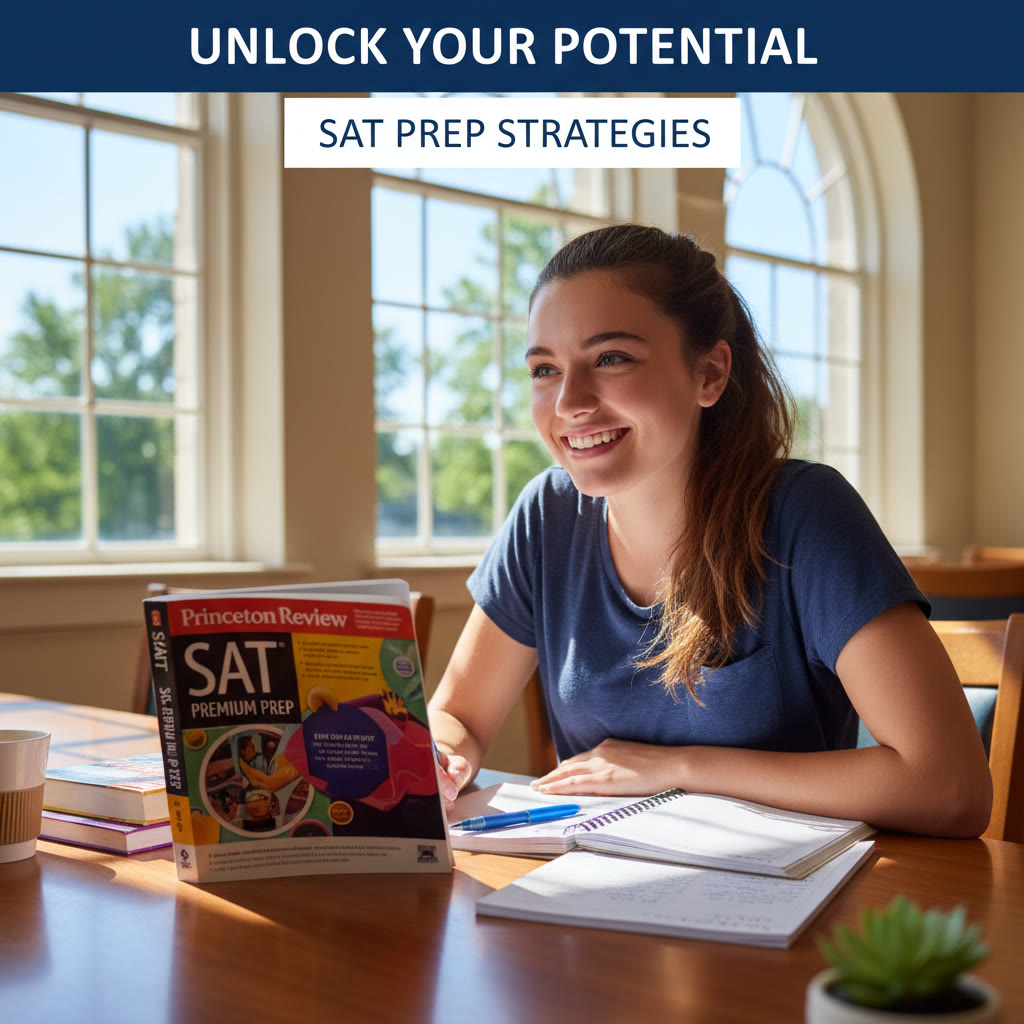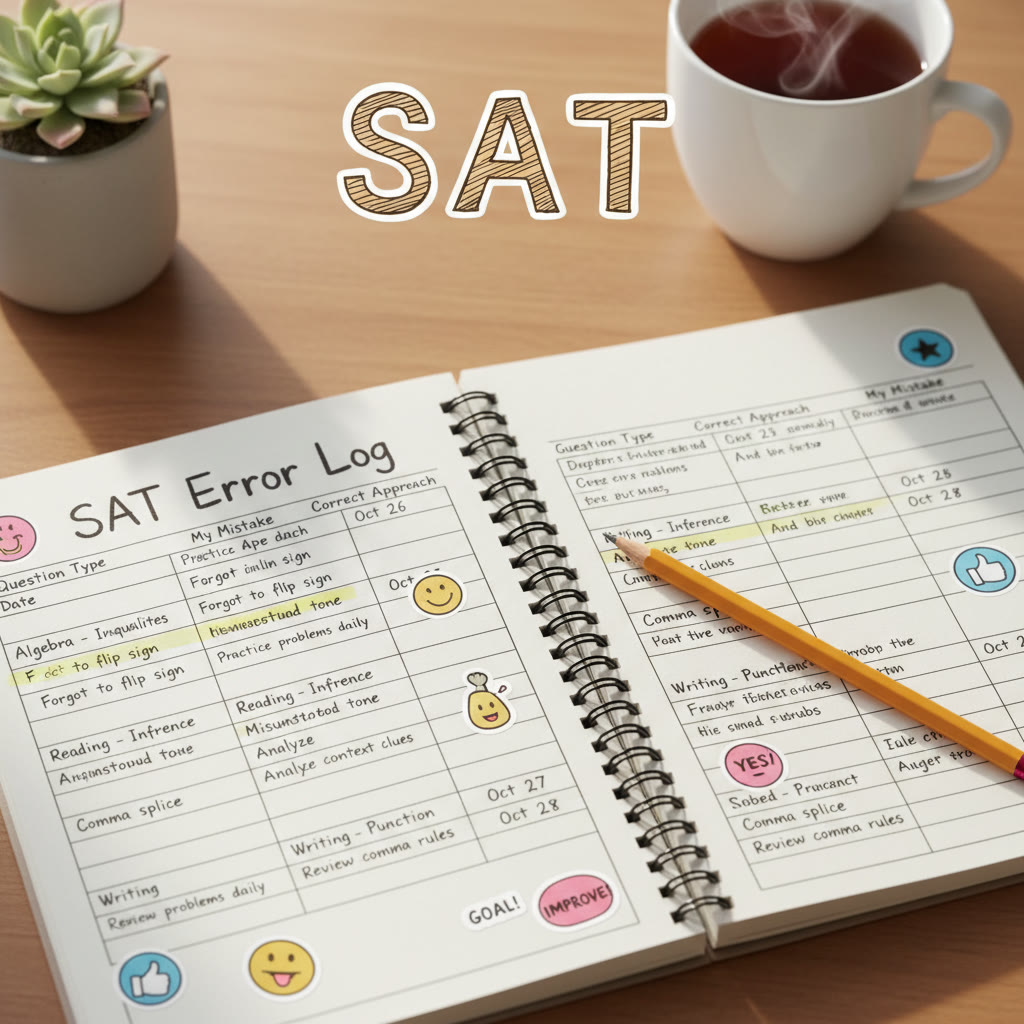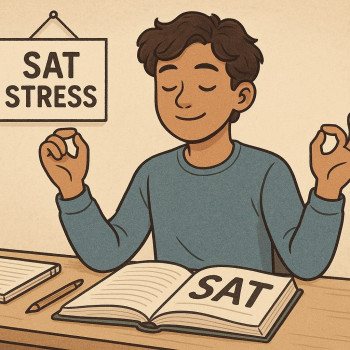How to Manage SAT Prep When Money Is Tight: A Friendly Guide
It’s easy to feel boxed in when you see shiny ads for expensive prep courses, private tutors, and fancy study bundles. But the truth is this: excellent SAT preparation does not require a six-figure budget. If you’re a student with limited financial resources, you can still build strong scores through smart planning, free and low-cost resources, focused practice, and—when it makes sense—targeted, affordable tutoring like Sparkl’s personalized options. This guide walks you through the mindset, the plan, concrete resources, and the small investments that give the biggest returns.
Why mindset matters more than money
Before we dig into resources and schedules, we need a mindset reset. Money influences options, but it doesn’t determine potential. Students who score well on the SAT often share traits that cost nothing: consistent practice, curiosity about mistakes, and the discipline to study smart, not just long. With limited funds, your edge is strategic thinking—finding the highest-impact study actions and sticking to them.
Start with a realistic diagnostic
Effective prep begins with knowing where you are. A diagnostic test flags strengths and weaknesses so you don’t waste limited time on areas you already command. Use a free, full-length SAT practice test under timed conditions to simulate the real thing. Keep a simple record of your scores by section and question types missed—this will be your baseline.
Build a budget-friendly study plan
A study plan is the map that turns scattered effort into progress. When funds are scarce, the plan must be laser-focused.
How to prioritize topics
- Fix high-frequency errors first: these are mistakes that reappear in every exam practice—basic algebra rules, punctuation in grammar, or careless reading habits.
- Boost sections with the most score-gain potential: usually the Math section has content that responds well to targeted review, and Reading comprehension improves rapidly with strategic practice.
- Cut low-return activities: avoid endless passive review like re-reading notes without active problem solving.
Sample 12-week budget plan
This schedule assumes 8–12 hours per week of study, which many students can arrange alongside school.
| Weeks | Focus | Weekly Routine |
|---|---|---|
| 1 | Diagnostic + foundational review | Take practice test; review missed content; set goals |
| 2–4 | Math fundamentals & grammar rules | Problem sets 3x/week; grammar drills 2x/week |
| 5–8 | Timed sections & strategy | Full section practice + review; targeted error logs |
| 9–11 | Full tests + pacing | 1 full practice test/week; review mistakes deeply |
| 12 | Polish & rest | Light practice; focus on confidence and test-day logistics |
How to track progress without expensive tools
- Use a simple spreadsheet or notebook to log practice tests, section scores, and question types missed.
- Set micro-goals: e.g., reduce arithmetic errors by 50% in two weeks.
- Review one mistake a day deeply—explain why your wrong answer seemed right and what rule prevents it next time.
Free and low-cost resources that actually work
High-quality, low-cost or free materials exist—often from the same institutions that design tests. The trick is to pick the resources you’ll use consistently.
Free official practice tests and materials
The College Board releases official practice tests and sample questions. These are the closest thing to the real SAT and cost nothing. Schedule these for diagnostic and weekly full-test practice as you approach exam day.
High-value free websites and apps
- Official practice platforms that include question explanations — use them for timed section practice.
- Public library e-resources — many offer free access to prep books and online subscriptions.
- Low-data apps for flashcards and vocabulary — practical for commuting or short breaks.
Low-cost study aids that give big returns
Instead of expensive all-in-one packages, choose targeted low-cost options:
- A single comprehensive SAT prep book (check library sales or used bookstores).
- Subscription access to practice question banks for a month when you need intensity.
- Pay-per-hour tutoring credit for emergency weak spots rather than long-term hourly packages.
Study techniques that maximize limited time
Good technique multiplies the value of each hour you study. Here are proven tactics to accelerate improvement without spending more.
Active practice beats passive review
Working problems under timed conditions, self-testing, and explaining answers aloud are far more effective than re-reading notes. Emulate the test environment and force retrieval—the cognitive act of pulling answers from memory strengthens retention.
The two-question drill
After each timed section, identify two representative errors you made and drill them until the underlying concept is automatic. Over weeks, these two-question drills compound into a much stronger foundation.
Use ‘error logs’ like a coach
- Record the question, why you missed it, the correct approach, and a short cue for future recognition.
- Review the log weekly; this focused repetition beats random practice.
Smart time management techniques
Time is often the limiting factor more than money. Practice pacing by deliberately skipping questions that take too long and returning to them if time allows. Build a small set of time-to-answer benchmarks for each question type and practice hitting them.
Creative low-cost supports: community, school, and peers
You don’t need to go it alone. Communities and schools offer resources that are often overlooked.
Leverage school resources
- Ask teachers for past papers, topic reviews, or short explanations on specific weak points.
- Some schools run free or low-cost group prep sessions—join them to get guided practice without high fees.
Build or join a study group
Study groups are free and powerful when structured. Assign roles—one student times sections, another collects problems, and everyone reviews mistakes together. Teaching a concept to peers is one of the best ways to solidify it for yourself.
Community centers and libraries
Local libraries frequently host test-prep workshops or have free access to prep books and software. Register for workshops early—many have limited spots.
When to invest in paid help—and how to do it affordably
There are times when a small investment pays off disproportionately: a tutor for a month to clear a persistent block, or a practice-test subscription during the final push. The key is to buy only what directly addresses your highest-impact needs.
How to choose affordable tutoring
- Pick tutors who focus on your top two weaknesses instead of generalists who cover everything superficially.
- Consider short, intensive tutoring bursts: e.g., 6–8 focused hours over two weeks to break through a plateau.
- Look for tutors who provide concrete homework and diagnostics rather than just sitting through practice tests.
Personalized tutoring can be surprisingly efficient. For example, Sparkl’s personalized tutoring emphasizes 1-on-1 guidance, tailored study plans, expert tutors, and AI-driven insights—so a brief, focused tutoring package can fix problems that would otherwise take weeks to correct on your own.
Practical cost-saving examples and comparisons
It helps to see the math. Below is a simple cost-benefit table that compares common prep choices and what you can expect in terms of benefits and fit for a tight budget.
| Option | Typical cost range | Best for | Drawbacks |
|---|---|---|---|
| Official practice tests (free) | $0 | Baseline & realistic practice | No personalized feedback |
| Used prep book / library | $0–$20 | Content review & practice problems | Limited practice tests |
| Monthly question bank subscription | $10–$30/month | High-volume practice with immediate scoring | May lack customization |
| Short burst 1-on-1 tutoring | $50–$300 total (varies) | Fix stubborn weaknesses fast | Requires good tutor selection |
| Long-term intensive course | $500–$2000+ | Comprehensive prep if budget allows | Expensive; may include unnecessary materials |
How a little money can go a long way
Spending $100 on a focused tutor who diagnoses why you’re losing points on data interpretation could yield a 30–80 point gain—far better value than a generic $500 course if your budget is tight. The best purchases are those that replace weeks of unproductive practice with targeted change.
Test-day and logistical tips that save money and stress
Small, practical steps reduce anxiety and avoid last-minute expenses.
Register early and check fee waivers
- Register for the SAT early to avoid rush fees and to choose a convenient test center.
- If you qualify for financial assistance, apply for fee waivers—many students don’t realize they’re eligible.
Plan test-day transportation and supplies
Pack what you need the night before: admission ticket, photo ID, pencils, a calculator with fresh batteries, and a snack. Avoid last-minute trips for items that cost more at convenience stores.
Simulate test-day conditions cheaply
Take full-length practice tests in a quiet room, on a Saturday morning, with timed breaks. Use household clocks or phone timers. This practice prevents surprising logistical hiccups on test day that might force rescheduling.
Motivation and mental health on a budget
Studying on a tight budget can be emotionally draining; maintaining motivation is part of the strategy.
Celebrate small wins
Record weekly improvements even if they’re modest—faster pacing, fewer careless errors, or a higher score on one section. Small wins build momentum.
Manage stress without expensive therapy
- Practice short mindfulness exercises before timed practice to improve focus.
- Break study sessions into 25–50 minute blocks with short breaks to avoid burnout.
Putting it all together: a realistic example
Meet Amina, a high school junior who works part-time and has limited funds for SAT prep. She has eight weeks before her test and can spend about 8 hours a week studying. Here’s her plan:
- Week 1: Take a free official practice test for diagnosis. Borrow a prep book from the library.
- Weeks 2–5: Follow a focused plan—3 math sessions, 2 reading sessions, 2 grammar sessions weekly. Keep an error log and review it every weekend.
- Week 6: Contract 4 hours of 1-on-1 tutoring focused on data analysis and pacing (small, strategic investment). She picks a tutor who provides a practice set to work on between sessions.
- Weeks 7–8: Take two more full practice tests, review mistakes, and taper intensity in the final week to rest properly.
With focused effort and a small targeted investment, Amina improves by 120 points—enough to make a meaningful difference for college applications.

Final thoughts: resourcefulness beats spending power
Preparing for the SAT on a tight budget is challenging but far from impossible. With thoughtful diagnostics, a laser-focused study plan, free and low-cost resources, strategic short-term tutoring, and disciplined practice techniques, students can reach competitive scores without a big financial outlay. Remember: targeted effort and smart choices often out-perform the most expensive options when money is scarce.
If you’re considering a little extra help, consider options that emphasize personalization and efficiency. For example, Sparkl’s personalized tutoring model—1-on-1 guidance, tailored study plans, expert tutors, and AI-driven insights—can be used in short, high-impact bursts that fit tight budgets and address exactly the skills that hold you back.
Parting advice
Start with a free diagnostic test, build a prioritized plan, drill actively, and be smart about any small purchases you do make. Keep a close eye on progress, and don’t underestimate community and school resources. With determination and a strategic approach, limited funds won’t stop you from achieving a score that opens college doors.

Good luck—and remember, some of the most resourceful, highest-scoring students started with the exact constraints you face. Your effort, tactics, and persistence will be the greatest investments of all.
















No Comments
Leave a comment Cancel